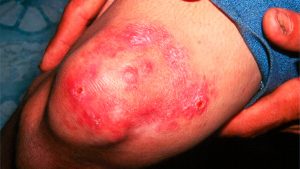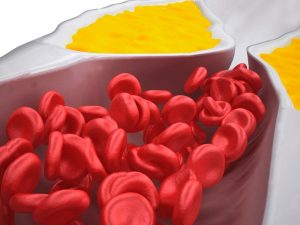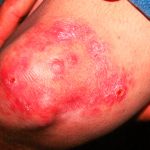What is a Superfood?
There is no scientific or regulated definition for a superfood, so how do we know what they are? The term “superfood” has become widely accepted and is defined by the Merriam-Webster dictionary as “a food (such as salmon, broccoli, or blueberries) that is rich in compounds (such as antioxidants, fiber, or fatty acids) considered beneficial to a person’s health”. In summation, they are foods that are rich in nutrients, are linked to disease prevention and offer multiple health benefits.
The word was first documented in the early 20th century around the time of World War I, in a food marketing strategy. The United Fruit Company wanted to promote its banana imports and focused the campaign on the health benefits of the fruit. Once the fruit was validated by the medical community, the “superfood” term took off. The American Medical Association published research linking bananas to the treatment of celiac disease and diabetes. This was before the true cause of celiac disease, gluten, had been discovered. While it is true superfoods contain many rich and beneficial properties, it is important to have a well-rounded diet. There is no single fruit or vegetable that can eliminate disease, but including nutrient-rich foods can contribute to your overall health. If you are concerned you aren’t getting enough in your diet, talk to a nutritionist for personalized recommendations.
Your Superfood List
The popularity of individual foods ebb and flow. Often people will hop on to a superfood trend until the next one comes along. Here is a list of popular and exotic superfoods and their benefits:
- Spirulina: A blue-green algae that is produced in oceans and salty lakes, it can be consumed in tablets or as dried powder. Health benefits include high iron content and beta-carotene.
- Purple mangosteen: Hailing from the tropics, these purple and round fruits are not common to come by. They are rich in vitamin C and contain naturally occurring anti-inflammatory and antibacterial properties.
- Bee pollen: Bee pollen is simply pollen that accumulates on the bodies of bees. It is a rich source of vitamins, minerals and antioxidants and contains carotenoids. Carotenoids are organic pigments that can protect your eye health.
- Cacao: In its raw form, dark chocolate can provide a boost of antioxidants. Unprocessed raw cacao is one of the richest, naturally occurring sources of Cacao also contains flavonol, which improves circulation, reduces blood clots and decreases inflammation. This food is good for cell health and prevents damage from free radicals.
- Goji berries: Long used in traditional Chinese medicine, these semi-bitter berries are usually served dried. They contain high amounts of vitamin A, vitamin C, zinc, fiber and protein,
- Maca root: This root is visually similar to a white radish. Maca is usually used in a powder form and has a sweet, nutty taste. It is high in iron and iodine which aid in cell growth, as well as promoting a healthy metabolism. Potassium in maca helps the body with digestion and muscle contraction.
- Pumpkins: A study found that the proteins in pumpkin rinds could inhibit the growth of Candida albicans, the fungus that causes vaginal yeast infections and diaper rash. Pumpkins also contain the carotenoid pigment, good for eye health and decreasing the risk of breast cancer.
- Pomegranates: Prostate cancer is the second-leading cause of cancer-related deaths in men. A study found that there are components in pomegranate juice that inhibited the movement of cancer cells.
- Apples: A study showed that the apple-a-day rule may have some weight to it. Participants ate an apple a day over four weeks and it lowered their LDL or “bad” cholesterol. High LDL has been linked to an increased risk of heart attack and stroke.
- Blueberries: While foods have come and gone on the superfood list, blueberries have stood the test of time. They contain vitamin C, fiber, manganese, and antioxidants such as There have been several studies done on the possible healing properties of the fruit, including improving heart health, decreasing high blood pressure, helping memory and preventing cancer. While there is not enough evidence to fully substantiate these claims, dietitians agree that they are a valuable addition to your diet due to their antioxidant component.
Your Healthy Superplate
There is no doubt that adding foods with antioxidants and high nutritional properties are good for your diet, but as with anything balance is the key. Nutritional experts at the Harvard School of Public Health created their version of the U.S. Department of Agriculture’s (USDA) MyPlate, addressing some of the health deficiencies in the original design. The plate is a simple guideline to help you make healthy eating choices.
- Vegetables and fruits: This should take up one half of your plate. There should be more vegetables than fruits in your diet as fruits can be high in sugar. The goal is to include as much color and variety in this section of your meal.
- Whole grains: Grains should account for a quarter of your plate. These include whole wheat, barley, wheat berries, quinoa, oats and brown rice. Whole grains have a better effect on your blood sugar and insulin than white or refined grains.
- Healthy/power protein: This will account for the last quarter of your plate. Healthy proteins include fish, chicken, beans and nuts. Limit your intake of red meats and avoid processed meats, such as bacon and sausage,
- Healthy plant oils: Moderation is the key with oil. Opt for olive, canola, soy, corn, sunflower, and peanut. Avoid hydrogenated oils that contain trans fats. Low-fat does not translate into healthy.
- Beverages: Water, water, water and more water. This is health advice that will never change. Humans are made up of 60 per cent water, so it is important to stay hydrated. Avoid sugary drinks and limit your intake of milk, dairy products and juice to one serving a











